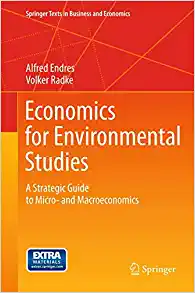Question
Q) For the following question, show your work for all answers. You work for a biotech company that is considering new R&D for a substance
Q) For the following question, show your work for all answers. You work for a biotech company that is considering new R&D for a substance that would simultaneously consume ocean plastic, absorb greenhouse gases, and increase ocean albedo. You're confident in your ability to develop a reasonably successful product, but you are not sure how well you can safeguard your intellectual property (IP) from rival biotech firms. You are risk-neutral. You face three alternative choices:
Invest in the R&D and apply for a patent. In this case, you expect to spend $10m on R&D and $5m on patent expenses but obtain $60m in revenue. (Note that you will have to commit to patent application when deciding on R&D.)
Invest in R&D and not apply for a patent. In this case, you expect to spend $10m on R&D and receive $60m in revenue. However, there is a 70% chance that some aspects of your IP will "spill over" to rival biotech companies, and you will not be able to maintain a monopoly position as the sole producer of this wonder substance. Other firms may enter, and you will lose market share resulting in a revenue loss given by L.
Don't invest in R&D. Incur no research costs and receive no revenue from such an endeavor.
A. Represent the key aspects of the decision you face with an appropriate decision tree.
B. If L = $5m, what alternative will you choose?
C. If L = $10m, what alternative will you choose?
D. Under what values of L would you prefer to patent your technology than operate without a patent? (Round to two decimal places.)
E. Now assume that conducting R&D reveals whether your IP will spill over to other firms. Your R&D cost is still $10m. Your understanding of the probability of an IP spill-over as of now is the same (there is a 70% chance of spill-over occurring), but R&D will reveal whether or not it will occur with certainty.
If, after R&D, your IP is safe, you can expect the same $60m in revenue as before.
If, after R&D, you expect your IP to spill over to other firms and you do not patent your technology, you expect to lose $10m in revenue compared to the case of your IP being safe. If you patent your tech, your patent cost will be $5m and your revenue will be $60m.
i. Represent the key aspects of the decision you face with an appropriate decision tree.
ii. Will you invest in R&D and patent right away, invest in R&D and consider patenting after conducting research, or chose not to invest in R&D? What calculations led you to this decision?
iii. Discuss how this scenario relates to the "Real Options" framework for investing under uncertainty by identifying (1) the option in this scenario and (2) how your choice of whether and when to exercise that option allows you to make the best decision.
Step by Step Solution
There are 3 Steps involved in it
Step: 1

Get Instant Access to Expert-Tailored Solutions
See step-by-step solutions with expert insights and AI powered tools for academic success
Step: 2

Step: 3

Ace Your Homework with AI
Get the answers you need in no time with our AI-driven, step-by-step assistance
Get Started


